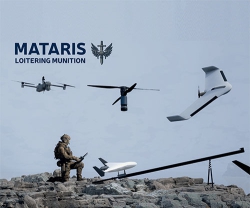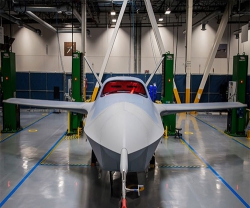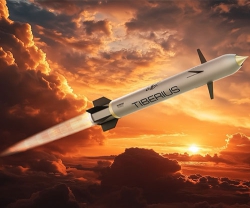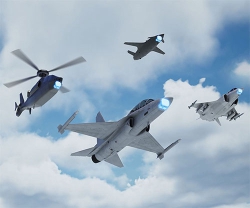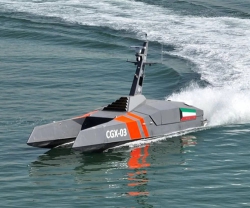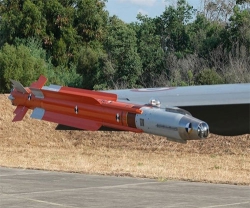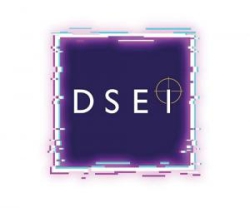Leonardo has launched a new product, called ‘BriteStorm’, that will allow Armed Forces to operate deep within enemy territory, even when that territory is guarded by modern Integrated Air Defence Systems (IADS).
BriteStorm is able to perform ‘stand-in jamming’: an airborne electronic warfare capability, deployed ahead of the main force, to deliver high-powered interference against a wide spectrum of threats. By doing so, BriteStorm degrades the enemy’s IADS, suppressing its ability to detect and lock onto other platforms, protecting friendly forces and enabling their mission.
The BriteStorm payload is designed to be installed on the widest possible range of UAVs and launched effects. It will equip each platform with an advanced array of digital deception techniques, deployable at long range.
The UK Royal Air Force’s Rapid Capabilities Office (RCO) is working with Leonardo in relation to the capability and has purchased payloads to conduct trials. Successful flights with the RCO proving the capability have already taken place.
Developed at Leonardo’s electronic warfare research and manufacturing base in Luton, UK, BriteStorm builds on the Digital Radio Frequency Memory (DRFM) technology underpinning Leonardo’s in-service BriteCloud countermeasure, the only DRFM-based expendable on the market to have been demonstrated effective in live tests. In contrast to BriteCloud, which is designed to disrupt incoming missiles’ radar guidance systems, BriteStorm has been engineered to confuse and suppress ground-based surveillance radars, preventing the enemy from tracking and then engaging friendly forces.
BriteStorm works by using Leonardo’s mission-tested DRFM technology to detect and evaluate the electronic warfare threat environment and then choose the most relevant countermeasure technique. Depending on the situation, BriteStorm’s effects can range from barraging the enemy system with electronic noise to more sophisticated techniques such as creating dozens of realistic ‘ghost’ fighter jet signatures, confusing and misdirecting the enemy response.
BriteStorm is small, lightweight and platform-agnostic. A standard BriteStorm fit incorporates a platform-specific antenna, transmit-receive modules and Leonardo’s Miniature Technique Generator. It is simple to integrate, making BriteStorm an accessible route to establishing a powerful, attritable, stand-in jamming capability. The BriteStorm development team has drawn on Leonardo’s company-wide programme of digital transformation to create a powerful and sophisticated product, whilst ensuring the payload can be considered attritable.
In addition to the UK Ministry of Defence, Leonardo views the U.S. Department of Defense as a key potential customer for BriteStorm, with the payload able to deliver a capability advantage to operators in contested electronic warfare environments, while being rapidly reprogrammable to match the pace of the threat. BriteStorm has been designed to be readily exportable, with demonstration units already in the USA. Leonardo is expecting to see further interest in BriteStorm from customers in Europe, the Middle East and Asia Pacific.
Leonardo is an international industrial group, among the main global companies in Aerospace, Defence, and Security (AD&S). With 53,000 employees worldwide, the company approaches global security through the Helicopters, Electronics, Aircraft, Cyber & Security and Space sectors, and is a partner on the most important international programmes, within these sectors, such as Eurofighter, NH-90, FREMM, GCAP, and Eurodrone. Leonardo has significant production capabilities in Italy, the UK, Poland, and the USA.
Leonardo utilises its subsidiaries, joint ventures, and shareholdings, which include Leonardo DRS (72.3%), MBDA (25%), ATR (50%), Hensoldt (22.8%), Telespazio (67%), Thales Alenia Space (33%), and Avio (29.6%).
Listed on the Milan Stock Exchange (LDO), in 2023 Leonardo recorded new orders for €17.9 billion, with an order book of €39.5 billion and consolidated revenues of €15.3 billion. Included in the MIB ESG index, the company has also been part of the Dow Jones Sustainability Indices (DJSI) since 2010.


